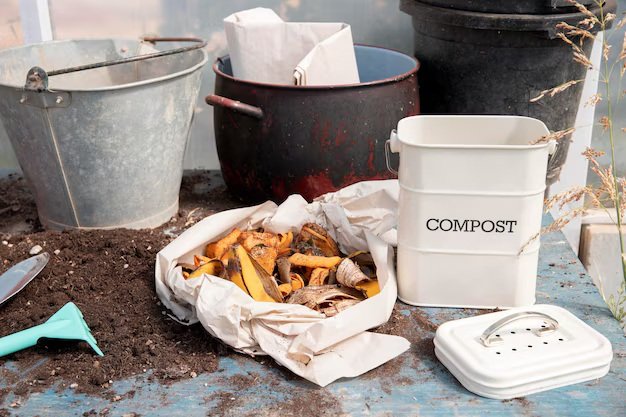What’s Eating My Plant Leaves? Identify Pests & Fix Damage Naturally
Walking out to your garden and seeing chewed-up leaves can be frustrating — and a little alarming — especially when you’re not sure what’s causing the damage. It’s a feeling I know well from growing my own veggies and flowers, wondering whether pests, disease, or something else is to blame. The reality is that many different creatures and conditions can harm your plants’ leaves, turning a thriving garden into a mess of holes and disfiguration. But there’s a way forward. By carefully investigating the symptoms and understanding the most likely suspects — whether they’re insects, mammals, slugs, or even environmental stressors — you can take back control and keep your garden healthy.
In this guide, we’ll walk you through the most common culprits that compromise your plants’ foliage, plus the expert strategies you can use to protect them naturally, safely, and effectively.

In This Article
- 1. Insects
- 2. Sap-Suckers
- 3. Mammals and Other Critters
- 4. Fungal and Environmental Damage (Often Misidentified)
- Holistic Prevention and Maintenance
- Conclusion: Actionable Advice
1. Insects
Caterpillars
Caterpillars—especially tomato hornworms—are notoriously hungry. These vibrant green larvae, often growing over 3 inches, can strip a tomato plant bare in just days. A gardener from Minnesota Extension notes they “blend in so well…you may not notice until the damage is severe.” Similarly, a Texas gardener shared that hornworms can decimate a small plant in one to two days once they reach about two inches long.
Management Tips:
- Hand-pick early: Check leaves in the morning when caterpillars are sluggish.
- Use BT: Spray Bacillus thuringiensis on young larvae; it’s a caterpillar-specific bacterium safe for bees and other beneficials.
- Boost natural enemies: Invite birds, lacewings, or predatory wasps by planting diverse flowering plants.
- Leave parasitised worms: According to experts, if you spot hornworms with little white cocoons, leave them be—they’re hosts to beneficial wasp larvae.

Beetles
Beetles—like Japanese beetles and flea beetles—leave behind neat, round holes or skeletonise leaves, often reducing them to lace-like remnants. They can also infest flowers and fruits, especially on plants like roses, grapes, and peaches. Japanese beetles are highly destructive generalist feeders, known to attack over 300 plant species. According to the University of Kentucky, Japanese beetles skeletonise leaves, chew through flower petals, and can even feed on ripening fruits, making them a widespread and aggressive garden pest.
Tactics:
- Shake-and-soapy-bucket: Gently shake beetles into a bucket of soapy water in the evening or early morning when they’re sluggish.
- Neem oil or kaolin clay: Apply neem early in the season to deter feeding; kaolin clay creates a harmless mineral barrier on leaves.
- Barriers: Floating row covers work great in spring before beetles show up.
- Trap caution: Kentucky entomologists warn that beetle traps can attract more pests, causing worse damage. If you use them, place them far from your garden.

Leaf Miners
Leaf miners are larvae, usually from flies or moths, that burrow between the upper and lower surfaces of leaves, leaving visible winding tunnels or blotches. Unlike caterpillars, they eat tissue inside the leaf.
Management Tips:
- Prevention with neem oil: Spraying neem oil can help deter egg laying by adult leaf miners.
- Parasitic wasps: Tiny parasitic wasps hunt leaf miner larvae from within, effectively reducing populations without chemicals.
- Crop rotation matters: Removing and rotating infested plants breaks the life cycle and prevents return infestations.
- Authority confirms methods: Minnesota Extension notes that while leaf miners rarely kill plants, they can damage edible greens, and recommends a mix of non-chemical approaches and minimal pesticide use. Also, Gardening Know How emphasises the timing of sprays and supporting beneficial predator insects like Diglyphus isaea.

2. Sap-Suckers
Aphids
Aphids are small, pear-shaped insects that swarm on tender new growth. They pierce plant tissues and suck out plant juices, which can cause leaves to curl, turn yellow, or drop altogether.
Control methods:
- Blast with water: A strong spray from a hose is a classic, gentle way to dislodge aphids. According to the University of Florida, simply spraying oleander aphids off tropical milkweed with water and insecticidal soap helped preserve monarch butterfly habitat in home gardens.
- Introduce ladybugs: These natural predators feast on aphids and can dramatically reduce infestations.
- Use insecticidal soap: Products containing potassium salts of fatty acids are safe for people, pets, and beneficial insects and work on contact. University of Connecticut notes that they disrupt aphid cell membranes to kill them. Just remember, they only affect pests you touch and leave no lasting residue.
- Rotate chemical classes if needed: For severe infestations, commercial options like Beleaf can help, but aphids are quick to resist. A Dutch study recommends switching between pesticide types to prevent resistance.

Spider Mites
Spider mites are even tinier than aphids, nearly invisible until they leave telltale signs—tiny speckles (stippling) and fine webbing on leaves. They thrive in hot, dry conditions and multiply rapidly in low humidity.
Control methods:
- Encourage natural balance: Avoid broad-spectrum pesticides that kill predator mites. Instead, use selective treatments and maintain plant health—proper watering and avoiding excess nitrogen reduce mite appeal.
- Increase humidity: These pests flourish when it’s dry (below ~50% humidity). Try misting leaves or using a humidifier. Studies show raising moisture discourages their growth by up to threefold.
- Blast with water: Like aphids, mites can be washed off using a strong stream aimed under leaves.
- Introduce predatory mites: Species like Phytoseiulus persimilis and Neoseiulus californicus specialise in devouring spider mites and thrive even in low humidity conditions.
- Use insecticidal soap or miticide sprays: Soap helps, but it must reach every mite to be effective. For established infestations, approved miticides (organic or conventional) perform best when rotated.

3. Mammals and Other Critters
Rabbits, Deer & Rodents
If you’re waking up to shredded stems or leaves, mammals might be your culprits. The signs are pretty distinct:
- Rabbits often leave clean, angled snips (about 45°), especially near the ground, and sometimes chew off bark. You’ll also spot their familiar round droppings nearby. According to UC IPM, their incisors create sharp “knife-like cuts” on plants.
- Deer cause uneven, ragged edges on leaves and branches—up to 6 ft high—often accompanied by their shiny, oblong droppings. Their lack of upper front teeth makes the damage appear jagged.
- Voles and other rodents gnaw on bark and stems at the base of plants, leaving small tooth marks and underground tunnels. Field voles, in particular, sometimes girdle young trees.
Solutions you can trust:
- Fencing: For rabbits, install a 2‑ft chicken-wire fence buried 6–10 in into the ground to prevent digging. Deer require taller protection—either a single 8‑ft fence, a 6‑ft fence angled out, or dual 3‑ft fences spaced apart.
- Motion-activated sprinklers or dogs can effectively scare off mammals, though dogs may need supervision and training.
- Smell deterrents, like garlic spray, predator urine, or commercial rabbit repellents (e.g., putrescent egg solids), can help, though they need frequent reapplication—especially after rain.
Slugs & Snails
Those shiny trails and holes that look like someone took a bite with a spoon? You’re probably dealing with slugs or snails.
- These molluscs chew irregular holes in leaves, often near the ground or along edges, and leave behind glistening mucous trails. They especially target seedlings and leafy plants like lettuce and hosta.
- According to RHS, their populations spike in warm (around 17 °C), damp conditions, making late spring and early summer prime time for slug activity.
Effective defences:
- Cultural changes: Reduce moisture by watering in the morning, improving drainage, pruning lower branches, thinning dense ground cover, and removing hiding spots like debris or mulch.
- Barriers: Copper tape around pots or garden beds produces a mild electric shock when slime contacts it. It’s simple, safe, and endorsed by guidelines.
- Traps & hand-picking: Lay down inverted boards, flower pots, or beer traps in the evening to lure them out. Then collect by hand after dark or early morning.
- Biological control: Attract natural predators like birds, frogs, beetles, toads, and ground beetles to reduce slug numbers.
- Organic baits: Iron-phosphate–based pellets (like Sluggo) are safe around pets and wildlife and can deter feeding, although they work more slowly than metaldehyde baits.
- Nematodes: Beneficial microscopic worms target slugs specifically and are recommended by organisations like the RHS as eco-friendly alternatives.
Learn More: What Is Eco-Friendly Pest Management?
4. Fungal and Environmental Damage (Often Misidentified)
Sometimes what looks like insect chewing is actually something else entirely.
Leaf Spot Fungi
Tiny fungal diseases, like those from the genus Cercospora, can create irregular holes once infected leaf tissue dies and falls out. According to a recent mung bean study, hot, humid climates significantly increase Cercospora leaf spot outbreaks in tropical regions, leading to serious crop losses (up to 61%) during the flowering and pod-filling stages.
In Belgium, farmers are turning to weather-based predictive models to get ahead of Cercospora outbreaks in sugar beets. These models track specific conditions, like over 90% relative humidity for several hours, combined with temperatures above 16°C during the day and 10°C at night. When these conditions align, the model issues alerts to guide precise fungicide timing. According to field trials, this approach correctly identified outbreaks more than 84% of the time, while minimising false alarms to under 15%. It’s become a valuable decision-making tool for disease management.
Tip: Boost airflow by pruning crowded foliage. Remove and dispose of infected leaves right away. And if needed, apply copper fungicide—but do so sparingly and at the right time to avoid harming beneficial insects or disrupting soil health.
Wind, Hail, or Sunscald
Remember that the weather can mimic pest damage. A gardener friend once thought beetles were munching on her tomato leaves—until she discovered sunscald was actually the culprit. Covering the plants during midday heat eliminated the “chewed” look.
Sunscald, also known as southwest injury, happens when the bark or leaves are heated by direct sun during warm days and then quickly chilled at night. This cycle damages tissue and can crack bark, creating holes or lesions that look like insect feeding. Studies from Purdue (Indiana) and Arkansas show this is common on thin-barked plants in spring or early summer.
Tip: Keep an eye on your local weather—if there’s a risk of intense sun followed by cold, provide shade or wrap vulnerable young trees. Use temporary covers on garden plants during heat spikes or hailstorms.
Holistic Prevention and Maintenance
Companion Planting
Pair plants that naturally help each other. For instance, basil planted near tomatoes or marigolds around beans can deter common garden pests. Basil emits compounds that can repel hornworms and flies, while marigolds act as natural decoys for pests like nematodes and whiteflies. The U.S. Fish & Wildlife Service also notes that scented companions can mask the smell of crops and attract beneficial insects, turning your garden into an insect-friendly zone .
Soil Health = Plant Immunity
Strong, well-nourished plants are better prepared to ward off insects and diseases. Adding mature compost enriches the soil with organic matter, retains moisture, supports beneficial microbes, and gradually releases nutrients over time. Research shows compost application improves soil microbiome diversity and structure, boosting plants’ resilience even years later .
Crop rotation also strengthens soil structure and disrupts pest life cycles, limiting outbreaks and reducing soil-borne diseases . Including legumes like beans or peas in rotations fixes nitrogen and supports soil health, further boosting plant immunity.
Observation Is Key
Daily check‑ins are essential. Inspect plants up close, gently flip leaves to check the undersides, and act fast at the first sign of chewing, eggs, or webbing. This aligns with Integrated Pest Management (IPM) principles promoted by the EPA and USDA, which emphasise early detection to enable non-chemical control options.
Learn More: Common Plant Diseases: Symptoms, Affected Plants & Organic Treatments
Conclusion: Actionable Advice
- Inspect Carefully: Take a close look—check under leaves, around stems, and consider a nighttime peep if pests are nocturnal.
- Identify the Pattern: Is the damage chewed, sucked, tunnelled (“mined”), or looking scorched? Each pattern hints at a different culprit.
- Match Pest to Symptom: Use resources from your local extension office guide to pinpoint the pest causing the issue before acting. Proper ID helps you choose the right solution.
- Start with Simple Actions: If you can see them, handpick pests off your plants, or gently rinse leaves to wash them away before thinking about sprays.
- Go Natural First: Try eco-friendly options like neem oil (a 2024 study shows neem seed extracts work effectively and are safe for most wildlife). Other natural options include Bacillus thuringiensis (BT) for caterpillars and introducing beneficial bugs, such as ladybugs or lacewings, which research confirms help suppress pests and reduce pesticide use.
- Keep Notes: Log what pest you found, the steps you took, and whether they worked or not. That way, next time you’ll know exactly what to do—and what to avoid.







